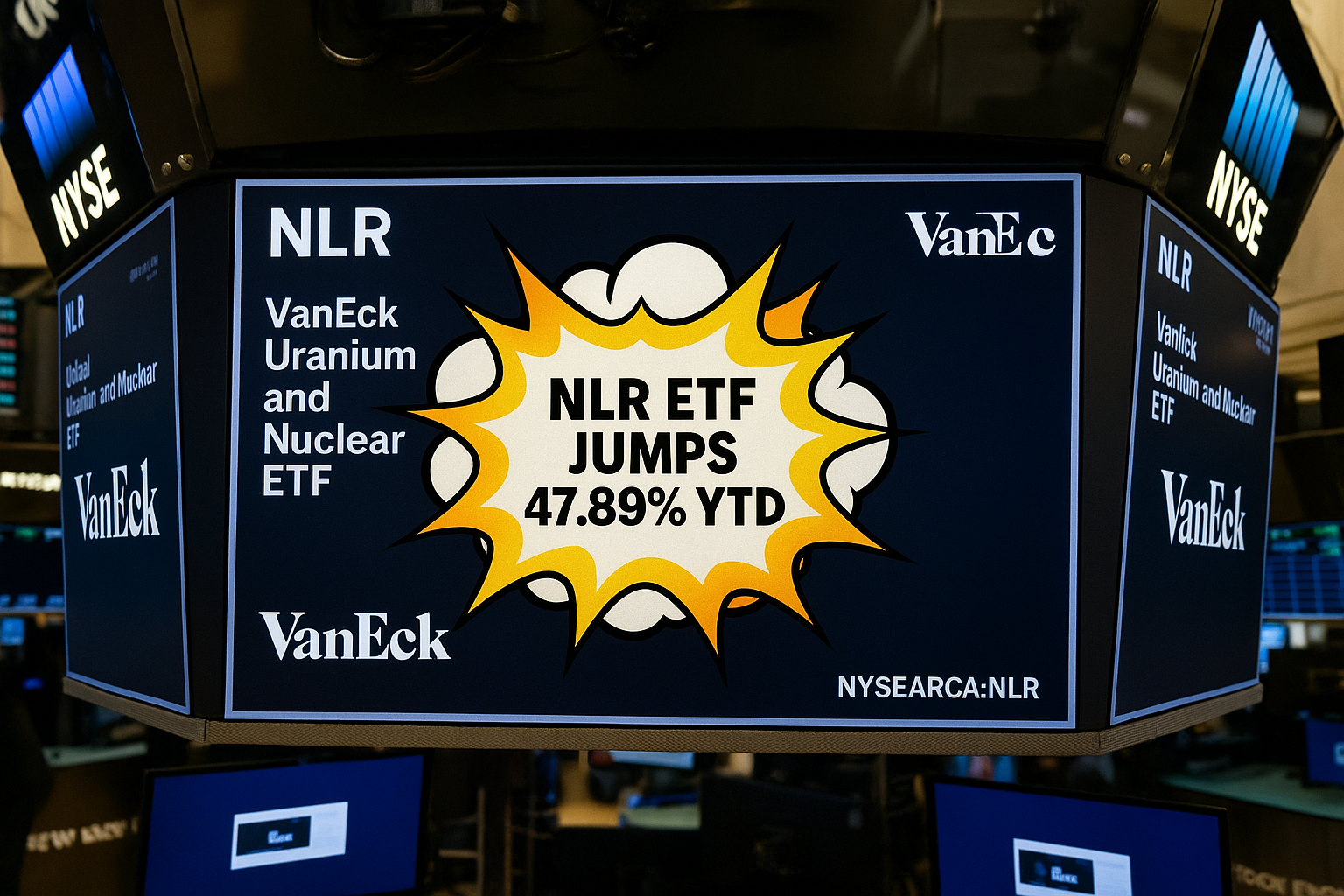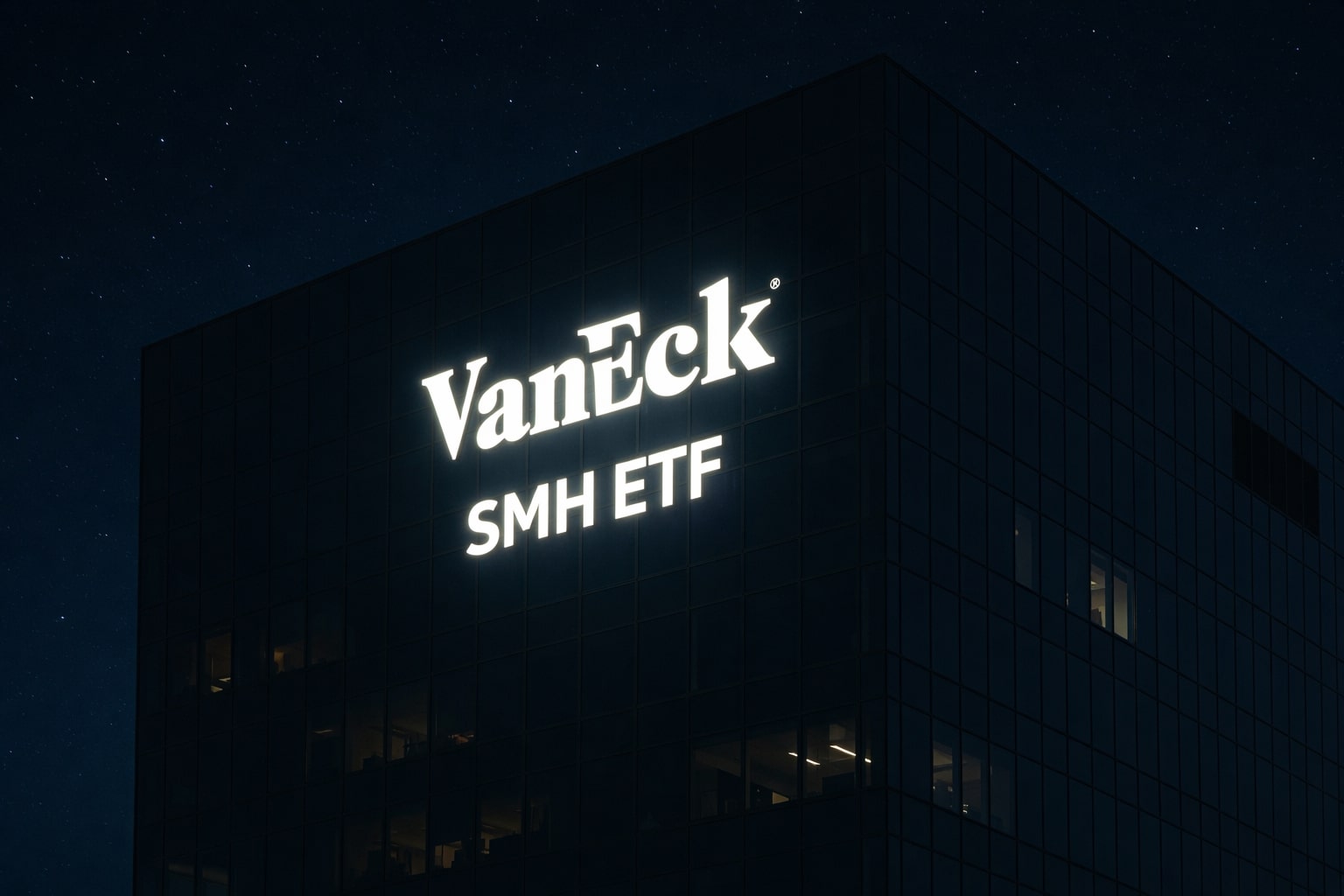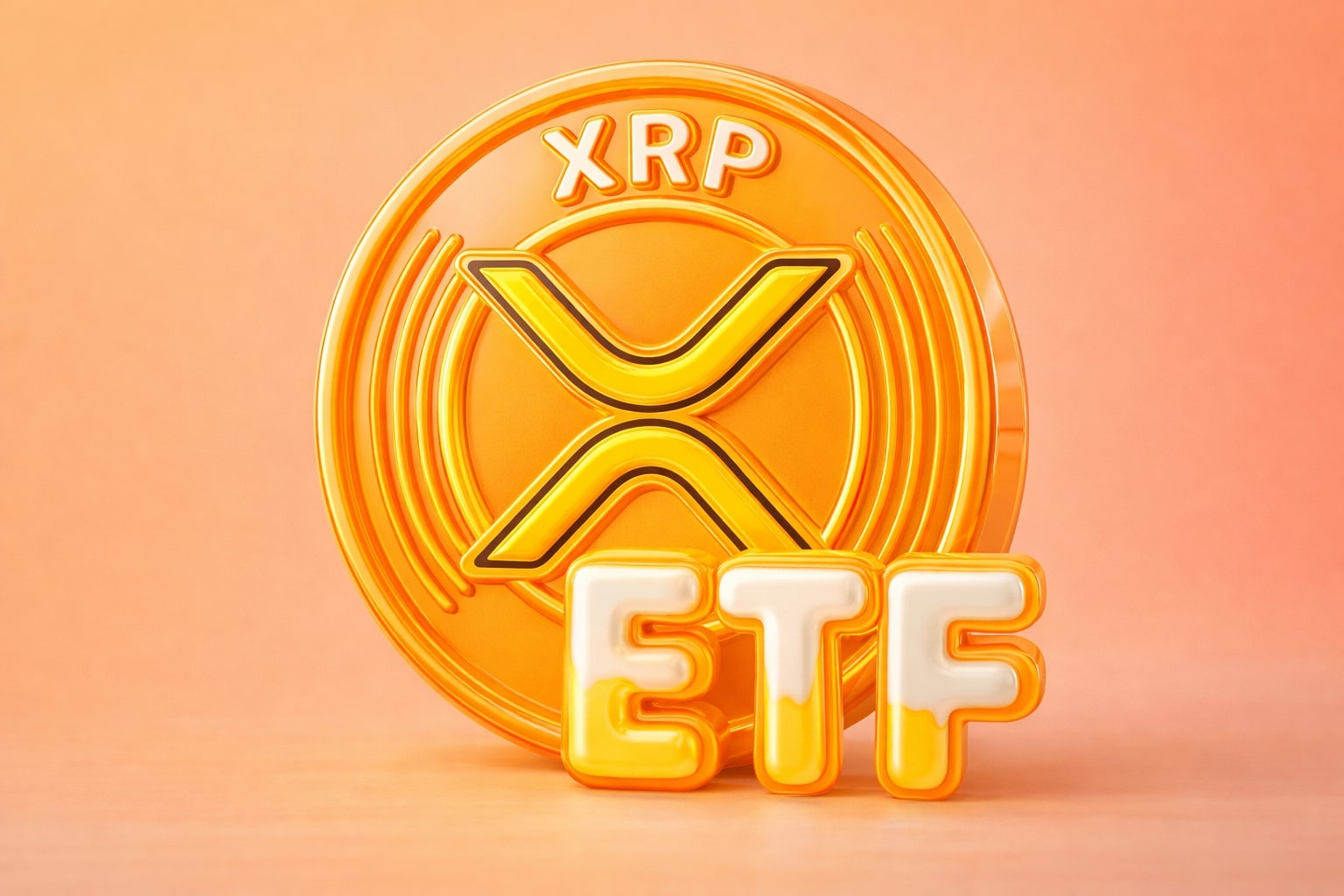
NLR ETF Powers 47.89% Higher on AI Energy Demand and U.S. Nuclear Expansion
Constellation Energy, BWX Technologies, and uranium miners propel NYSEARCA:NLR as policy tailwinds and AI-driven electricity needs spark a nuclear renaissance | That's TradingNEWS
NLR ETF Performance Driven by Nuclear Demand Surge
The NYSEARCA:NLR ETF has surged in 2025, outpacing most sector peers on the back of rising electricity demand from artificial intelligence data center growth, targeted U.S. government nuclear expansion policies, and renewed investment in uranium supply chains. Year-to-date, NLR has returned 47.89%, boosted by $541 million in net inflows over the last three months as investors align with the federal goal of scaling nuclear capacity from 100 GW to 400 GW by 2050. With $2.19 billion in net assets, a competitive 0.56% expense ratio, and quarterly rebalancing for heightened market responsiveness, NLR offers balanced exposure to uranium miners and nuclear operators.
Diversified Holdings Distinguish NLR From Mining-Focused ETFs
Unlike uranium-concentrated funds such as URA, which holds over 20% in Cameco alone, NLR spreads risk across the nuclear ecosystem. The top holding, Constellation Energy (CEG), makes up 8.06% and operates 21 nuclear plants with 32,400 MW capacity, delivering 10% of the nation’s carbon-free power. BWX Technologies (BWXT) at 6.91% brings exposure to small modular reactor (SMR) advancements, while Cameco (6.75%) and Uranium Energy Corp (5.85%) add mining leverage. Utilities like Public Service Enterprise Group (PEG) offer stability, ensuring the portfolio captures both commodity-driven gains and predictable regulated returns.
Constellation Energy as a Utility Growth Catalyst
CEG’s acquisition of Calpine Corporation expands low-carbon generation into geothermal and natural gas while reinforcing its nuclear dominance. Q2 2025 saw $6.1 billion in operating revenue, up 11.5% from last year, with GAAP EPS at $2.67. Its stock’s 36.8% year-to-date rise has been a core driver of NLR’s returns. The long-term contract with Microsoft to restart the Three Mile Island plant by 2027 directly ties nuclear production to AI infrastructure growth. With U.S. data center energy consumption projected to jump from 4.4% of national supply in 2023 to 12% by 2028, CEG is positioned for sustained contract-driven expansion.
BWX Technologies Expands SMR and Defense Applications
BWXT recorded 24% EPS growth year-over-year in Q2 2025 alongside a record $6 billion backlog. The BANR HTGR reactor, deployable without water and fueled by proprietary TRISO technology, is designed for remote industrial sites and military bases. Project Pele—a Department of Defense contract for a 1–5 MW portable microreactor—underscores BWXT’s role in strategic military energy supply. The company is also advancing naval nuclear propulsion and space exploration power systems, while its $525 million acquisition of Kinectrics expands lifecycle services for nuclear infrastructure, aligning with national goals to quadruple nuclear capacity by mid-century.
AI Data Center Expansion as a Structural Demand Driver
The AI sector’s rapid scaling is reshaping the nuclear demand curve. Oracle and OpenAI’s 4.5 GW Stargate project, Meta’s 5 GW Hyperion cluster, and xAI’s Colossus facility contribute to a projected 15 GW of new capacity needs by 2030—15% of current U.S. nuclear generation. As GPUs grow more power-intensive, SMRs and long-term nuclear PPAs are emerging as the preferred solutions for hyperscale operators. Amazon’s $52 billion data center expansion includes partnerships with Dominion Energy, X-Energy, and Energy Northwest for SMR deployment, directly supporting holdings within NLR.
Policy Acceleration Enhances Project Timelines
Executive orders reducing licensing for new reactors to 18 months, streamlining renewals, and easing approval for innovative designs have removed key barriers to capacity expansion. Subsidies and policy stability are accelerating investment cycles, ensuring that both large-scale plants and modular designs can move from planning to operation faster. This policy shift positions the U.S. alongside pro-nuclear leaders like France and Japan, moving away from the restrictive approaches seen in Germany’s 2011–2023 nuclear exit.
Valuation Outlook and Key Risks for NLR
Portfolio modeling indicates a 9.3% upside over the next 12 months, with a projected NAV of $130. Leaders in expected contribution include PG&E Corp with over 40% stock gain potential and Denison Mines leveraging high-grade uranium projects. Risks involve capital intensity—estimated at $7.9 billion per GW for conventional plants and $9 billion+ for SMRs—and interest rate sensitivity, which could pressure financing costs. However, uranium market tightness after years of underinvestment supports the mining segment, while utility holdings sustain cash flows, creating a balanced risk-reward profile.
Final Positioning on NLR
With 48.2% allocation to uranium mining, 32.9% to utilities, and 18.9% to industrials, the NLR ETF captures both commodity upside and infrastructure stability. The intersection of AI-driven energy needs, aggressive U.S. nuclear expansion, and SMR adoption gives it a multi-year growth runway. Based on current fundamentals, heavy institutional inflows, and year-to-date performance, NLR stands as a Buy for investors seeking long-term exposure to the nuclear renaissance.
That's TradingNEWS
Read More
-
SMH ETF: NASDAQ:SMH Hovering at $350 With AI, NVDA and CHIPS Act Fueling the Next Move
16.12.2025 · TradingNEWS ArchiveStocks
-
XRP ETFs XRPI and XRPR: Can $1B Inflows Lift XRP-USD From $1.93 Back Toward $3.66?
16.12.2025 · TradingNEWS ArchiveCrypto
-
Natural Gas Price Forecast: NG=F Falls to $3.80–$3.94 as Warm Winter Kills $5.50 Spike
16.12.2025 · TradingNEWS ArchiveCommodities
-
USD/JPY Price Forecast - USDJPY=X Slides, BoJ 0.50% Hike, Fed Cut and NFP Set the Next Big Move
16.12.2025 · TradingNEWS ArchiveForex


















